Touching Places, Feeling Sites: Ann Hamilton’s the common S E N S E (2014-2015) as Spatialized Sensorium
By Dandi Meng
In a 1958 article entitled “Sculpture in Our Time,” Clement Greenberg writes, “The human body is no longer postulated as the agent of space in either pictorial or sculptural art; now it is eyesight alone.”[1] While it is not entirely clear what Greenberg meant by “agent of space,” this quote aptly exemplifies a particularly Modernist tendency of emphasizing visuality at the expense of other senses, and, relatedly, of conceptualizing space in art primarily in terms of ocular space. Scholars who resist this interpretation often point to the fact that with very few exceptions, sensory experiences are inherently synesthetic, overflowing the bounds of conventional categorizations of the senses and potentially “contaminating” purely visual accounts of art. Moreover, the turn towards site-specificity in contemporary art[2] ostensibly abolishes any notion of abstract, socially-detached space, even the flat space of the canvas that Greenberg championed, opting instead for an engagement with space as it is practiced[3] and produced[4] under particular social and historical conditions.
As an institution that prides itself on its attention to site-specificity, the Henry Art Gallery often collaborates with artists who are interested in incorporating elements of the site into the work rather than coming in with a prefabricated concept or art object. In the case of the common S E N S E, the renowned multimedia artist Ann Hamilton was commissioned by the Henry to create a gallery-wide exhibition that would respond to the museum and its surroundings, and she took the opportunities to dig deep into the University of Washington’s archives. Hamilton had previously shown at the Henry in 1992, with the controversial exhibit accountings,[5] in which the gallery walls were darkened with soot from candles and 200 live yellow canaries were released in the museum space. This took place before the Henry quadrupled in size as a result of a renovation in 1997, and the common S E N S E was a chance for Hamilton to work in relation to this newly-renovated space.
The most visually prominent component of this wide-ranging exhibition is the series of scans of taxidermically “prepared” animals that are affixed to the walls of the gallery space where Hamilton’s 1992 show had taken place. The prominence of this particular element will be briefly explored later in this essay. Thematically, the show is primarily advertised as being concerned with three main organizing ideas: time, text, and touch, with special emphasis on the last of these concepts[6]. It’s hard to leave the show (or even the Henry’s website) without having learned that the title of the exhibition is taken from Aristotle’s Historia Animalum and De Anima, which describe touch as the sense that unites all animals–not only is this little factoid printed on the informational sheet included in the paper folder that visitors receive at the front desk, posters hanging all throughout the museum allude to it as well. Another crucial component of the show is the fact that Hamilton understands touch as a necessarily reciprocal act—on the handout given to all museum-goers, she writes, “Contact with the ground, the air, to someone or something outside the self and from this extension one is always touched in return—that is touch’s reciprocal condition and exchange.” Touch, Hamilton seems to assert, engages us in a communal sense of place, of being in common with those whom we come into contact, whether human, animal, object, or otherwise. The ethical dimensions of this reciprocity is explored throughout the show.
Hamilton’s understanding of touch is reminiscent of various scholars’ theorizations of the link between bodily sensation, emotion, and sociality. Most significantly for the purposes of this essay is Ann Cvetkovich’s use of “feeling.” In Depression: A Public Feeling, Cvetkovich discusses her own preference for “feeling” as opposed to “affect” or “emotion” when writing about what might generally be termed “the affective,” a preference which stems from the fact that for her, “feeling” is “intentionally imprecise, retaining the ambiguity between feelings as embodied sensations and feelings as psychic or cognitive experiences.”[7] Thus, when we ask questions like “How do I feel?’ or “How does capitalism feel?” (two questions that Cvetkovich poses as useful examples for thinking through the advantages of using “feeling”[8]), we can interpret the line of inquiry in several different ways. Taking the latter example, one could, in posing this question, be asking about how capitalism is internalized by its subjects (how it is registered experientially), what its “texture” is like (how it is registered haptically), or even the means by which it comes to perceive sensation (how it registers sensory information). The collapsing of these different senses of “feeling” parallels the mutuality of touch that underlies the common S E N S E—by thinking of the visitor’s position in the exhibition as being merely one facet of a polyvalent encounter, we are able to gain a more fleshed out understanding of the sensorial work that the show enacts.
Another aspect of the show that is highlighted it its promotional materials is its participatory elements, especially its affiliated Tumblr[9], where visitors and even non-visitors are encouraged to submit quotes that address the show’s themes. These are later incorporated into the show itself in the form of newsprint copies, a process that involves simultaneous accumulation (more and more quotes being submitted) and depletion (more and more visitor accepting the invitation to curate the quotes to their own taste). Visitors can also have their picture taken behind a semi-transparent screen, which produces a hazy, ghostly image that is only in focus at spots where the person is physically touching the screen, an effect that is not unlike that of the animal scans, which will be discussed later in this piece. These pictures are not given to the visitors in the way that the Tumblr-submitted quotes are, but instead are hung in stacks just above one of the counters where the reproduced quotes are available to be taken (see fig. 1). In contrast to the images of the scanned animals that slowly disappear over the course of the show, these images of visitors gradually accumulate in ever-growing stacks.
At the time of this writing, I have visited the common S E N S E a total of three times: once by myself, once as part of this course, and once with friends. Each time, my affective experience has been radically different, and my interpretation of the show has been enriched by each encounter. Over the course of this essay, I will be recounting some of my experiences in order to trace paths on the surface of my own affective maps of the show, proposing tenuous connections between my idiosyncratic engagement with the show’s themes and the broader aesthetic, historical, and institutional context of Hamilton’s work. My hope is that the boundaries between these “personal” reflections and the more standard “scholarly” analyses will remain semi-permeable, allowing their co-imbrications to materialize over the course of this piece.
the common S E N S E’s multi-sensory approach to the space of the museum troubles the ways in which the display of visual art is often associated exclusively with the ocular[10]. Hamilton explicitly addresses this issue on the Tumblr site and implicitly poses her own show in direct opposition to these standards, writing, “The museum is an institution of sight, a house of looking and seeing, a place where we behold with our eyes. We may be stirred, moved or touched by what we see but we rarely touch the thing seen.”[11] In this essay, I use “feeling” as a point of departure to probe the show’s engagement with the reciprocal nature of touch in its various forms. I aim to show that Hamilton and the Henry’s interest in site-specificity is manifested in this exhibition through its production of embodied states that alert museum-goers to their own situatedness in the gallery, fostering a quality of intense self-awareness in space. Throughout this piece, I theorize my own experience in the space of the show as being oriented around the push-and-pull tension of closeness and detachment, the subject and the object, touch and the foreclosure of touch. Space in the exhibition is the result of movement and the bridging of distances, not only physical distances but psychic, sensory, and ideological distances as well. As such, the show is at once intimate and social, engaging and implicating visitors in the wide sensorial nets that remap the borders between human and animal, observer and observed.
By myself, I experienced the gallery as a kind of hell house, one where every corner I turned bore the possibility of coming into close contact with the horrors of non-human animal death. Even though I found the concept and execution of the show to be extremely compelling and pleasant to behold during my first visit, I felt trapped, disoriented, and deeply uncomfortable in the room with the floor-to-ceiling hang of animal scans. I saw the room as confrontation and bombardment, and myself as the object of its critique. Similarly, the curtained carts in the downstairs room seemed to be purposefully obscuring their contents for the sake of a jump scare. When I pulled the curtain back on a particularly life-like fox fur garment, the bright yellow eyes of the fox looking dead ahead (see fig. 2), I felt chills spread through my body. I proceeded through the rest of that room like a child checking under the bed for monsters, lifting the corner of every curtain and peeking inside to make sure that the contents would be tolerable to see in full. The bullroarer room was under repair during my first visit, but I could hear faint whirring in the background as I walked by. I imagine that the complete aural experience would have been very jarring in my state of mind at that moment, and probably would have further heightened my unease.
Walking into the first room in the gallery, the visitor is faced with one vitrine whose longer side runs parallel to the counters piled high with stacks of newsprint quotes at either side of the room. The vitrine is filled with various scissors (some of which, appropriately, are shaped like birds) and commonplace books culled from a span of a few decades from the university’s collection (see fig. 3). A small poster on the wall establishes “commonplacing” as an organizing principle for the show, and invites visitors to begin building their own commonplace books with the newsprints of text fragments and animal scans around the gallery. This first room acts as a thesis of sorts for the whole show, not just through the text of the poster, but also through the organization of the contents of the vitrine. The scissors are all clustered together in a block, and the various commonplace books surround it, suggesting the show’s interest in bricolage and the creative capacities of curation. Unlike the printed books on display in the side galleries (see fig. 4), these commonplace books were clearly the handiwork of individuals who were deeply invested in their content. Indeed, the roughshod edges of the cut-out quotes are part of what makes the books so endearing to see on display. Visitors are in some sense asked to step into the shoes of these commonplace book creators, to take up their task using the materials available in the exhibition.
The act of walking through the galleries itself is a significant part of the sensory and spatial experience of the show. In The Practice of Everyday Life, Michel de Certeau understands the figure of the city-walker as a bricoleur, refashioning the city for his[12] own ends by “poaching” and re-appropriating existing objects and experiences, subtly shifting dominant social structures along the way. In the common S E N S E, walking is not only a practical way of getting around the gallery, it is an exploratory and creative act in and of itself. Related to the idea of walk-as-spatial-appropriation, there is a striking similarity between the actions of a visitor to the common S E N S E who rips an animal scan from the walls of the museum and the French “décollagists,” who walked around the city intentionally tearing posters from palisades as a political and aesthetic act.[13] In the space of the museum, this tactilely, aurally, and visually intense act of ripping seems like it should be utterly transgressive in its violation of the usual “no touching” policy, but instead it felt to me and, as far as I could observe, other visitors to be a completely natural way of interacting with the exhibit.
Perhaps this feeling of art’s accessibility is a large reason for the show’s popularity, or, more specifically, the popularity of the newsprint texts and animals scans. Though obviously not on the same scale as the actual show, visitors who take home stacks of newsprint can essentially recreate the aesthetic experience of a significant portion of the show in their own homes and continually partake in it even after the show closes. But is this participation that unsettles understandings of museum space and challenges visitors’ thinking on the role that the senses play in both bolstering and foreclosing ethical action? Or is this participation that simply allows viewers to help reproduce the very institutional operations that the show ostensibly challenges? There are no easy answers here, but the conditions of these posters’ distribution and circulation are crucial to consider.
The choice of newsprint as the medium for the sheets of quotes and animal pictures, both of which visitors are encouraged to “curate” for themselves and take home, seems significant. I find myself thinking of Benedict Anderson, who theorized the emergence of the nation-state as an “imagined community” to be heavily dependent upon print capitalism, including newspapers, as a unifying force.[14] In choosing a range of different quotes and pictures from what is available at the gallery, museum-goers experience a degree of individual creative agency, producing a collection of items particular to one’s experience at the show. At the same time, however, these curatorial acts are constricted to a limited range of available materials, and all visitors are to some extent trafficking in the same set of resources. Moreover, we might note that the animal scans are double-sided, with a different image on each side; the reciprocity of touch was set in action long before the viewer becomes involved.
In the context of a class on space, I became hyperaware of the nature of my movements through the museum. I noticed the amount of time I was standing in front of some wall text compared to others, sometimes not even reading but instead just letting my eyes pass over the text while furiously trying to synthesize snatches of ideas that had begun forming in my mind. The room full of animal scans came alive in a way that it hadn’t been during my first visit. I admired the “breath” coming from the vents in the gallery that sent the scans a-flutter, delighted in the oversized tags on the curtained carts that indicated the garments’ points of origin. The bullroarers seemed dull by comparison, a mere nuisance as I tried to hear others thoughts on the show over its thunderous din.
The curtained-off glass cases on the bottom floor of the installation evokes a variety of associations: crib, hospital bed, coffins, etc. All of these associations operate through a separation between oneself and an object to be perceived that can only be overridden through touch. The curtains act as the skins of what they conceal, and the fact that one must touch them in order to draw them back and reveal the contents of the glass cases (which, by contrast, one is still prevented from touching) creates a forced intimacy with and acknowledgment of the partition that separates us from what is not visible or tangible. Visitors are forced to walk around some the carts in a maze-like path in order to access one that are further in the back. This room is the most horizontally crowded one in the show, and because of the way that the carts are situated, it is impossible to see all at once. Some of the carts form nooks that visitors must step into in order to see in full, an action which makes for an essentially private viewing experience.
In the time between my second and third visit, the show metamorphosed in my mind. I became absorbed by it in a way that I hadn’t anticipated or could understand. I was surprised when I found myself enthusiastically recommending the show to everyone I talked to, despite my initial unease. The two scanned animal pictures I had taken with me hung next to each other on a wall in my room where I often glanced when distracted or bored. There, the pictures weren’t frightening or unsettling anymore—they had been taken away from the menagerie. I also noticed that I had chosen limbs for both of the pictures, having instinctively avoided the face. s
What Hamilton doesn’t directly address in the texts that she has produced for the common S E N S E is the unevenness of touch’s reciprocity, its undeniable chirality. When one touches a fur coat, one is touched back, affected by the texture and feel of the fur; but who is able to initiate touch? Who feels? Who is felt? A particular distribution of power underlies these distinctions, which cannot be dismissed simply through the claim of touch’s mutuality. As Sara Ahmed points out in Strange Encounters, to conceive of contact between two subjects as being a discrete event is to elide the already-existing systems of power that structure the encounter.[15] She instead proposes that we take the encounter, rather than the two subjects, as a starting point and investigate how the encounter has the effect of shaping both parties involved. Similarly, in the context of the participatory elements of this exhibition, the exchange between the museum-goer and the show is in some ways the point of the show itself. This alone is not novel for art that claims to be participatory. However, the sensory register of these encounter—their demand for intense closeness on the way to sociality—elaborates these claims with regard to specifically spatial concerns, turning the visitor’s body in on itself to experience space as it is sensorially received.
On a poster in the bullroarer room is a quote from Susan Stewart, a poet and critic, and Hamilton’s long-time collaborator: “Hearing is how we touch at a distance” (see fig. 5). In reconceptualizing sound as something tactile, not only are we able to gain a more synesthetic understanding of the senses, we can also begin to understand the material force of the audible. Sound is, after all, a mechanical vibration—the right frequency can shatter glass or disintegrate kidney stones. In commenting on the fundamentally synesthetic character of the senses, Patrizia Di Bello and Gabriel Koureas describe hearing as playing “a mediating role between the body and the spatial localization of those outside it,”[16] suggesting that sight alone cannot fully account for understandings of space as it exists in relation to living beings.
Visiting the show for the third time, this time with friends, I experienced the museum as a series of well-trodden paths. The logic of the show’s set-up began to make sense in my mind. I knew which sections of the show I would enjoy the most, and I felt like I was walking with a purpose instead of wandering. This familiarity was not without its drawbacks—my sense of mastery over the show caused me to be more careless in my observations, flitting from place to place looking for the parts that I knew I would most. One pleasant surprise that came out of this visit was my experience of the room with the bullroarers—maybe it was an effect of the sunny day and the natural light flooding in from all around or the enjoyable company, but the pairing of the exposed machinery of the bullroarers and the smooth finish of the miniature wooden desks and chair suddenly clicked for me, and I lingered there, sensing the motions of the machines moving up and down all over the room.
In a statement about this section of the exhibit, Hamilton draws comparisons between her vision for the bullroarer room and natural phenomenon like a flock of birds or the gathering of clouds before a storm (see fig. 5). And indeed, when a good number of the bullroarers are active at the same time, the sound in the room can be deafening. During those times, the gallery space becomes strangely claustrophobic, even though the room with the bullroarers is by far the one with the most amount of “empty” space in the entire gallery. Could this be because, as a friend of mine suggested, we associate loud sounds with crowded places? In the case of crowds, the feeling of claustrophobia seems to me to be primarily proprioceptive, and to a lesser extent, visual. Given the general lack of “stuff” in the gallery space with the bullroarers, the sound seems to fill up the whole room, changing the very nature of the air that a moment ago may have appeared completely devoid of matter or signification.
Choosing which animal scan to take home with me was the hardest part of each visit. During my second time there, the decision was especially difficult given the constraints involved in trying to be in sync with the rest of the class. Right as we were about to step out of the room with the scanned animals, I spotted a picture that I hadn’t noticed before. The hazy pastel palate and the delicate little feet matched with a tutu-like torso (see fig. 6) reminded me of Degas’s ballerinas and I found myself drawn to its perverse whimsy. As I reached out a hand to rip one of the prints down from the wall, my index finger brushed against the edge of the sheet and a thin red line formed on my fingertip. I instinctively recoiled, and sucked on the finger until it stopped bleeding. This, more than the picture booth or the Tumblr site, seemed to be what the exhibition was asking of me in return for my attendance. The show had drawn blood, my blood, had made its impression on me in the form of a paper cut. My participation—in art, in feeling, in violence, in space-making—was here impressed onto the surface of my skin, and I could feel it starting to burn.
Works Referenced
Ahmed, Sara. The Cultural Politics of Emotion. New York: Routledge, 2004.
Ahmed, Sara. Strange Encounters: Embodied Others in Post-coloniality. London: Routledge,
2000.
Benedict Anderson. Imagined Communities: Reflections on the Origin and Spread of
Nationalism. London: Verso Books, 1991.
Birkland, Dave. “Flap Over Canary Exhibit.” The Seattle Times (Seattle, WA), Feb. 16, 1992.
Candlin, Fiona. Art, Museums and Touch. Manchester: Manchester University Press, 2010.
Certeau, Michel De. The Practice of Everyday Life. Translated by Steven F. Rendell. Berkeley:
University of California Press, 2011.
Cvetkovich, Ann. Depression: A Public Feeling. Durham: Duke University Press, 2012.
Di Bello, Patrizia and Gabriel Koureas. “Introduction: Other than the Visual: Art, History, and
the Senses.” In Art, History and the Senses: 1830 to the Present, edited by Patrizia Di
Bello and Gabriel Koureas, 1-18. Burlington, VT: Ashgate Pub., 2010.
Hannah Feldman. From a Nation Torn: Decolonizing Art and Representation in France, 1945-
- 1952. Durham, NC: Duke University Press, 2014.
Greenberg, Clement. The Collected Essays and Criticism, Volume 4: Modernism with a
Vengeance, 1957-1969. Chicago: University of Chicago Press, 1993.
Kwon, Miwon. One Place after Another: Site-Specific Art and Locational Identity. Cambridge,
Mass.: MIT Press, 2002.
Lefebvre, Henri. The Production of Space. Translated by Donald Nicholson-Smith. London:
Blackwell, 1991.
Readers Reading Readers—A Commonplace. Accessed February 1, 2015. http://readers-reading-
readers.tumblr.com/.
Appendix
[1] Clement Greenberg, The Collected Essays and Criticism, Volume 4: Modernism with a Vengeance, 1957-1969 (Chicago: University of Chicago Press, 1993), 59.
[2] For an account of the forces that contributed to this turn, as well as helpful categories for thinking of participatory art, see Miwon Kwon, One Place After Another: Site-Specific Art and Locational Identity (Cambridge, MA: The MIT Press, 2004).
[3] See Michel de Certeau, The Practice of Everyday Life (Berkeley: University of California Press, 1984).
[4] See Henri Lefebvre, The Production of Space (Oxford: Blackwell, 1991).
[5] Dave Birkland, “Flap Over Canary Exhibit,” The Seattle Times (Seattle, WA), Feb. 16, 1992.
[6] For a detailed history of how the history of touch in the art museum, including its implications for contemporary art, see Fiona Candlin, Art, Museums and Touch (Manchester: Manchester University Press, 2010).
[7] Ann Cvetkovich, Depression: A Public Feeling (Durham, NC: Duke University Press, 2012), 4.
[8] Ibid. 5.
[9] Readers Reading Readers—A Commonplace, accessed February 1, 2015, http://readers-reading-readers.tumblr.com/.
[10] In the foreword to the anthology Art, History, and the Senses: 1830 to the Present, Simon Shaw-Miller draws a compelling connection between the strict separation of sense from one another and the disciplinarity of scholarly work, using the dual meaning of “faculty” (as in “university faculty” or “the faculty for speech”) to extrapolate on the stakes of this comparison.[10] This fits rather well with Hamilton’s interdisciplinary approach to the development of the show, drawing on materials available through the Henry, the Burke, and UW Libraries Special Collections that, regardless of their original reason for being catalogued, related in some ways to her themes.
[11] “on touch,” Readers Reading Readers—A Commonplace, accessed February 1, 2015, http://readers-reading-readers.tumblr.com/.
[12] De Certeau’s understanding of the city-walker is undeniably gendered male. See the dedication of The Practice of Everyday Life for a particularly damning example of this assumption.
[13] Hannah Feldman, From a Nation Torn: Decolonizing Art and Representation in France, 1945-1952 (Durham, NC: Duke University Press, 2014), 109-111.
[14] Benedict Anderson, Imagined Communities: Reflections on the Origin and Spread of Nationalism (London: Verso Books, 1991).
[15] Sara Ahmed, Strange Encounters: Embodied Others in Post-coloniality (London: Routledge, 2000), 4.
[16] Patrizia Di Bello and Gabriel Koureas. “Introduction: Other than the Visual: Art, History, and the Senses” in Art, History and the Senses: 1830 to the Present, ed. Patrizia Di Bello and Gabriel Koureas (Burlington, VT: Ashgate Pub., 2010), 7.

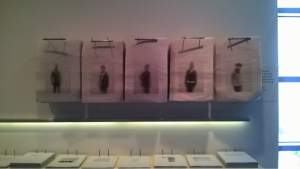
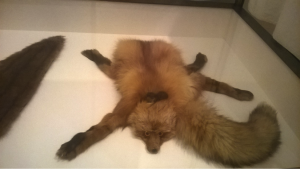
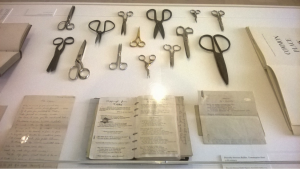
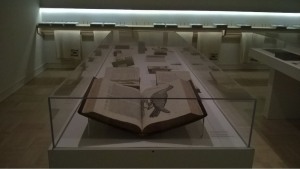
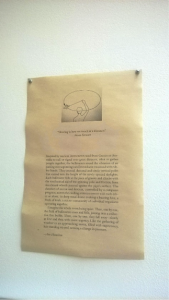
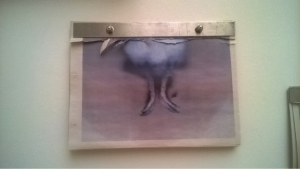
+ There are no comments
Add yours